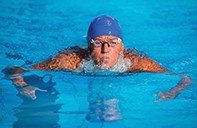Hidden caveats when diagnosing heart failure
A 63-year-old car sales representative, Mr DW, comes to see you, his GP, today along with his wife. He reports an insidious decline in his ability to swim 20 laps of the local olympic-sized swimming pool, which he has particularly noticed in the past six months. He has needed to interrupt his laps with a rest because of fatigue and dyspnoea, and on a number of occasions he has been unable to finish. He has no symptoms at rest and has not experienced any chest pain, palpitations or presyncope. He has no orthopnoea but volunteers that he has noticed some ankle swelling over the past four months. He acknowledges that he is overweight at 90 kg, but he has always been active, with which his wife agrees.
Mr DW normally sees you annually and has been stoic in reporting symptoms in the past. His medical history includes a recurrent meniscal knee injury, cholecystectomy and resected colonic polyps. He takes slow-release naproxen once daily with pantoprazole for gastric cover. He consumes up to three beers a day, with two alcohol-free days each week. He is a lifelong nonsmoker.
Picture credit: © Technotr/iStockphoto. Models used for illustrative purposes only.

